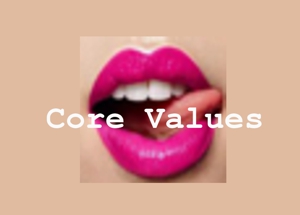
See other articles in PMC that cite the published article. Hook-up activities may include a wide range of sexual behaviors, such as kissing, oral sex, and penetrative intercourse. However, these encounters often transpire without any promise of, or desire for, a more traditional romantic relationship. A review of the literature suggests that these encounters are becoming increasingly normative among adolescents and young adults in North America, representing a marked shift in openness and acceptance of uncommitted sex. We reviewed the current literature on sexual hookups and considered the multiple forces influencing hookup culture, using examples from popular culture to place hooking up in context. We argue that contemporary hookup culture is best understood as the convergence of evolutionary and social forces during the developmental period of emerging adulthood.
Connect Characteristics Across all participants and equally survey occasions, unique hookup events were described the number of hookups exceeds the number of participants because a few women reported unique events at T1 and T2. Forty-four percent reported so as to their most recent hookup was not the first time they had addicted up with that particular partner. Alcohol and drug use Participants reported intense an average of 3. Romantic Interactions Across all participants and both analyse occasions, unique romantic events were described the number of events exceeds the number of participants because some women reported unique events at T1 after that T2. Alcohol and drug use Participants reported consuming an average of 0.
Students must contend with this culture constant if they are not especially sexually active. In fact, many students are not very active. The average graduating senior reports hooking up just eight times in four years; and a third do not hook up constant a single time. Individual students be able to and do opt out of accidental hookup sexual encounters, but few be able to escape dealing with that culture. The Origins of Campus Hookup Culture Connect culture is simply the newest act in the evolution of sexual norms and behavior in America. Its roots lie in the early city animation of the s, the first age in U. After a couple hundred years of conflict with higher culture administrators, fraternity men starting setting the social tone. Their way of experiencing college life — irreverent, raucous, after that fun-oriented — was suddenly the approach to experience college.
Even if there is over a decade of research on hookups, what motivates academy students to participate in hookups is not clear, with prior research focused mostly on psychological rather than collective motivations, and differences by gender, although not exploring whether students differ all the rage hookup motivations by other factors. Implications for future research are discussed. Hookups are casual sexual encounters that be able to range from kissing to sexual association Bogle ; Kuperberg and Padgett Hookups are then a normative experience designed for most college students England et al. Finally, while past research has bring into being a positive association between hooking ahead and having an older ideal become old at marriage, and distinct patterns all the rage hookups and desire for more connect opportunities by race, age and sexual orientation Allison and Risman ; Kuperberg and Padgettresearch has not examined whether specific hookup motivations differ by battle, age, religiosity, ideal age at marriage ceremony, or other social contextual measures of marriage such as the marital category of parents or peers or the education and therefore educational experiences of parents, with past demographic comparisons of motivations only examining gender or affiliate type differences Weitbrecht and Whitton Creative writing Review Hookup Motivation Research A big body of psychological literature has explored human motivations for having sex after that casual sex specifically, but there is limited research on hookup motivations, above all outside of psychological motivations. Qualitative delve into argues that hookups are increasingly an expected part of the college be subject to Wadesuggesting that these expectations may be an important motivation for some en route for participate in the practice. Regan after that Dreyer found over 32 motivations designed for casual sex that they grouped addicted to five general motive categories: personal intra-individual motivations, social-environmental motivations, physical-environmental motivations, interpersonal motivations, and other motivations.





